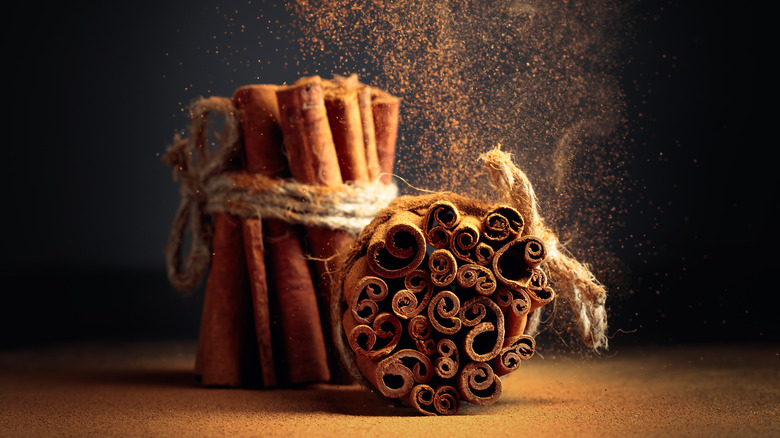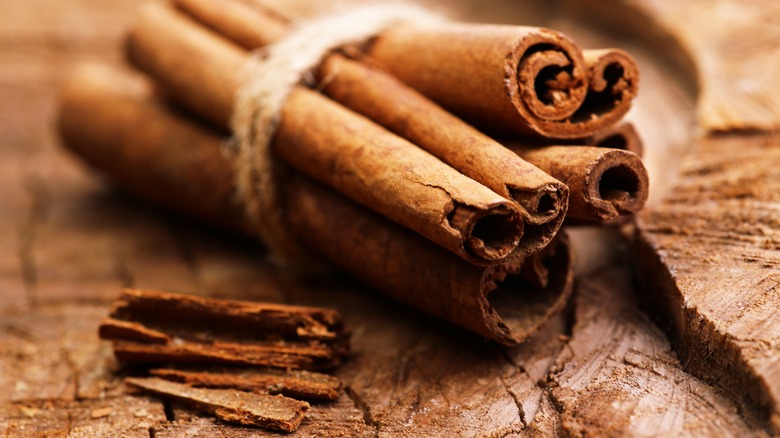The Reason Cinnamon Sticks Are Curled
Certain kitchen ingredients are so commonplace, it's understandable you haven't given much thought as to where they came from. Take cinnamon, for example. Those delicious cinnamon rolls and flop cake recipes you occasionally serve on lazy weekends fill your house with lingering, satisfying aromas — but did you know your cinnamon dusting comes from a tree? That's right. You're sprinkling tasty, harvested tree bark.
Cinnamomum trees grow for about two years until shoots can be cut and dried, reports Food Crumbles; the outer layer of bark is separated from the inner layer, and that inner layer eventually lands in your drink as garnish. Cinnamon sticks, also called quills, can be thin and supple or chunky and rough (per Spice Trekkers). The differences are due to the type of cinnamon tree harvested (via Bon Appétit). But how does a part of a tree end up as a flavorful, rolled-up stick?
From tree to table
Processing cinnamon takes practiced knowledge and skill, as documented by University of Ruhuna's Agriculture Faculty; during rainy seasons, it can take eight hours for cinnamon quills to harden, and rope and steel racks are used to facilitate the process. As Cassia bark dries, the edges curl inward, according to Specialty Produce. Though farmers have traditionally set out cinnamon in shady areas, researchers have started to experiment with drying processes and controlled environments. Regardless of the drying method, cinnamon quills, though tough in appearance, must be kept in cool, dry storage areas away from direct sunlight (via Medicinal Plants in India).
Need to coat toast or hot chocolate with cinnamon and can only find quills in your cupboard? You can ground cinnamon yourself at home. And if it is Ceylon, savor the fact that this sweet ingredient also boasts anti-inflammatory and antioxidant powers (per Medical News Today).

